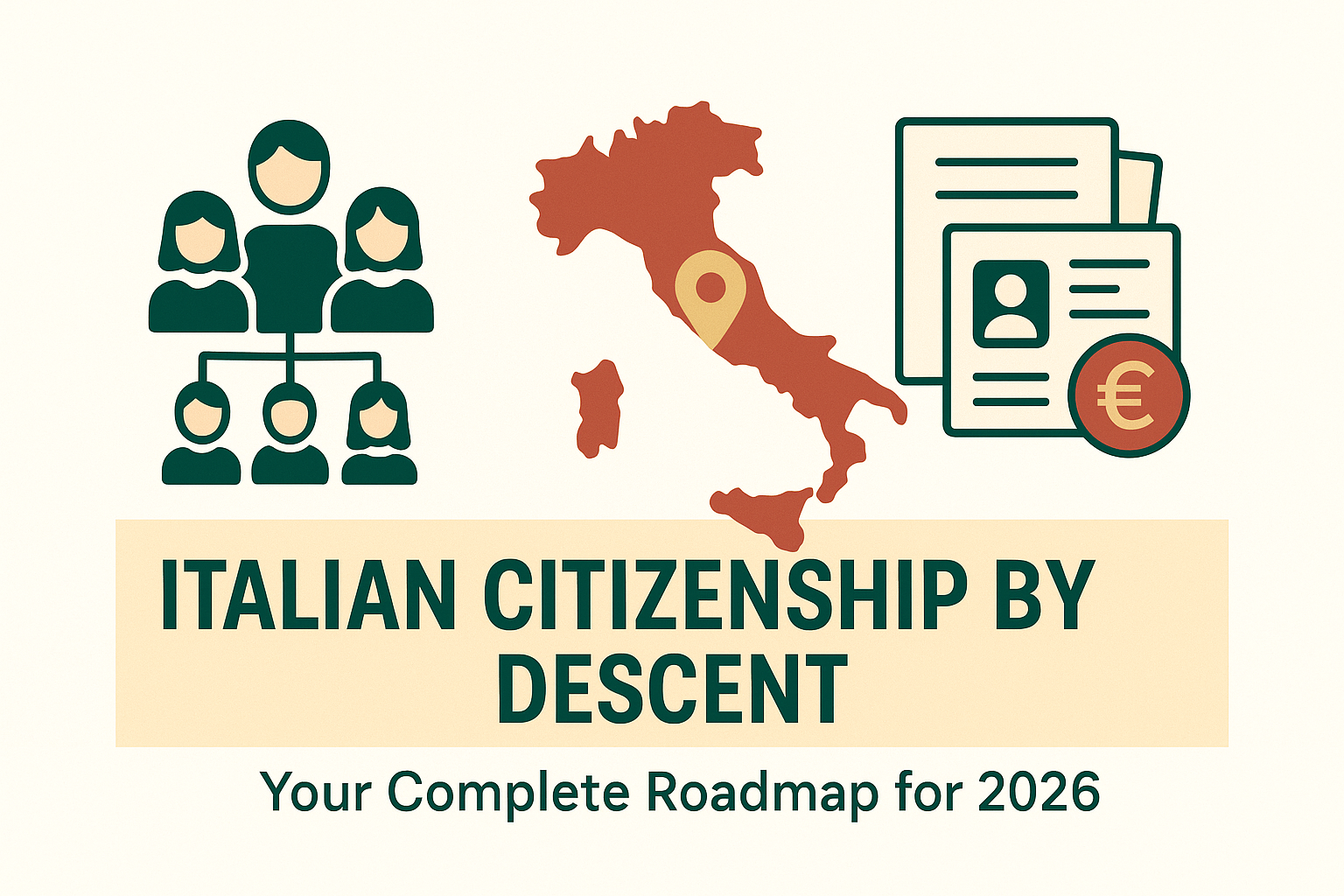Getting Italian citizenship through descent has become increasingly popular over the past few years, and 2026 brings both opportunities and challenges. I've spent considerable time researching the current landscape, and I want to share what I've learned with anyone considering this path.
The Reality of Italian Citizenship by Descent in 2026
First, let me be honest: this process isn't quick or simple. But if you have Italian ancestry, it's genuinely one of the most valuable investments you can make. I've seen people regret not pursuing it sooner, and I've seen others transform their lives through Italian citizenship.
The fundamental principle hasn't changed: if your parent, grandparent, or in some cases great-grandparent was an Italian citizen, you may have a legitimate claim to Italian citizenship. The "line of descent" rule is crucial here. Your lineage cannot be broken, meaning your ancestor must not have renounced their Italian citizenship before your parent was born. This is the single most common reason applications get rejected—often discovered too late.
Understanding the "1948 Rule" - Still Relevant in 2026
One thing that catches people off guard is what's known as the "1948 rule." If your line of descent passes through a female ancestor who had a child before January 1, 1948, you'll need to apply through the Italian courts rather than through a consulate. This can add significantly to your timeline and costs. It's not a deal-breaker, but it's something to be aware of early on.
The Application Routes: What's Really Happening in 2026
**Through Your Local Consulate**
If you're eligible through the direct line (post-1948), the consular route is typically faster. However, I need to be candid: consulates are increasingly backlogged. Some consulates that were processing applications in 6-9 months in 2024 are now taking 12-18 months. Expect to wait.
The process involves submitting certified copies of all relevant documents: birth certificates, marriage certificates, divorce decrees (if applicable), and death certificates for all people in your chain of descent. Every document needs to be officially translated into Italian and certified.
**Through Italian Courts**
The judicial route takes longer—typically 18 to 36 months—but costs less upfront. You're asking an Italian court to recognize your citizenship claim. If you fail the consular route, you can still pursue the judicial route.
**Hiring a Lawyer**
For someone with a complicated family history or those in a time crunch, hiring a lawyer (€2,500-€5,000) can get you processed in 3-6 months. For straightforward applications, it might be overkill.
The Document Gathering Reality
Here's where things get real: gathering documents is the hardest part. You'll need birth certificates, marriage certificates, death certificates, divorce decrees, naturalization records, and everything certified. Getting naturalization records involves contacting various government agencies and takes considerable time.
2026 Specific Updates
The Italian government has made some improvements to the online application portal for consulates. Many consulates now allow initial submissions digitally, which saves time. However, physical document submission is still required. Plan to budget 3-4 months just for gathering and certifying documents. Some vital records offices have long backlogs.
My Honest Assessment
Start the process now if you're serious. The consular route offers decent value for money (€300-500) if you're patient. The court route is for those who want to save money and don't mind waiting years. Hiring a lawyer makes sense if you have complications or need quick processing.
The most important step? Check if your ancestor naturalized before your parent was born. This determines everything. Don't overlook this crucial detail.

